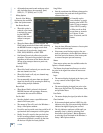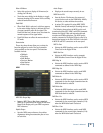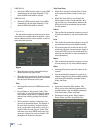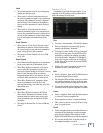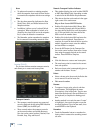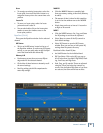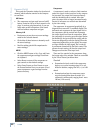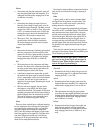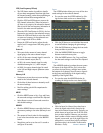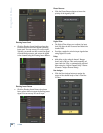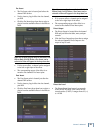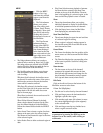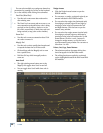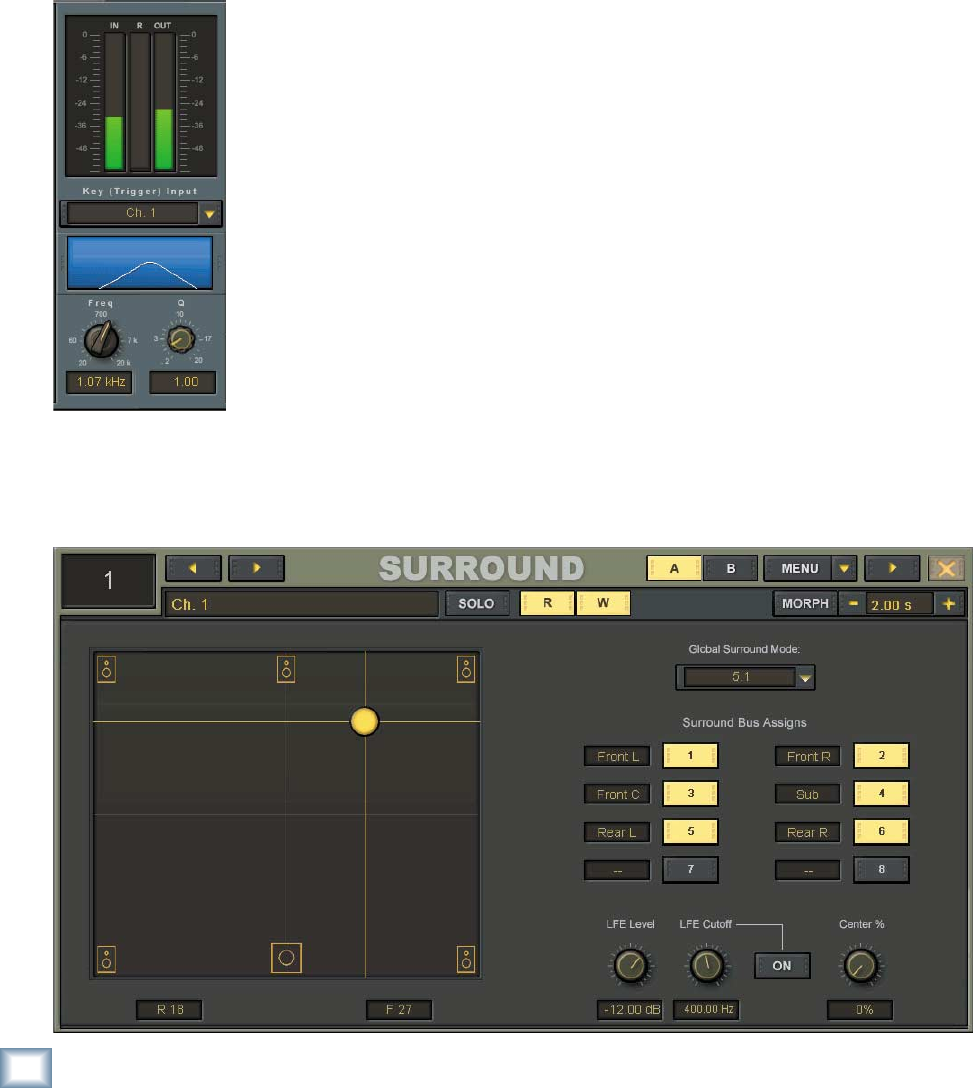
42
X.200
Digital X Bus
Range
• Determines the amount of gain reduction ap-
plied to the signal once the signal level drops
below the threshold. It is calibrated in percent,
ranging from 0% (no attenuation) to 100% (full
attenuation).
Key (Trigger) Input
• Uses the signal from another source to trigger
the dynamics for a channel.
• Click the drop-down box to select the key input
source.
• Touch the EQ window
below the drop-down box to
turn on the key input EQ (the
background of the EQ graph
lights).
• The key input EQ fi lters
the key input signal prior to
triggering the gate. It is a
peaking fi lter, and allows you
to tighten the trigger signal to
a narrow band of frequencies.
• There are two controls for
the key input EQ, Frequency
and Q. Use the V-Pots below
the graphic representation
of the knobs to adjust the
controls.
Surround (Ctrl+6)
The SURROUND window offers precise control
over image positioning in any mixing panorama
along with individual subwoofer level and depth of
center control.
Surround position control is available from the
control surface by using the individual channel PAN
L/R and PAN F/B V-Pot controls.
Global Surround Mode
• Click the drop-down box to select the surround
mode. The choices are Stereo (default), Quad,
LCRS, 5.1, 7.1 (SDDS), and 7.1 (TP).
• Changing the surround mode changes the posi-
tion of the speaker icons in the surround panner
display.
• The surround outputs are automatically as-
signed to the Bus 1-8 outputs. Click the buttons
in the Surround Bus Assigns section to assign
the surround signals from the selected channel
to the bus outputs (duplicates the bus assign-
ments in the Assign window).
Surround Panner
• Simply click and drag the ball in the surround
panner display to move the source location of
the signal within the surround panorama. The
top of the display represents the front speakers,
and the bottom of the display represents the
rear speakers and the subwoofer.
• The subwoofer is not affected by pan. Its signal
is tapped prior to the surround panning.



